Echoes of Ancient Lands
Church of Our Lady of the Rosary Old Goa
Mother Masala Tours
Quiet Strength Across Centuries
Church of Our Lady of the Rosary Old Goa. One of the most historic buildings in the region. Constructed between 1544 and 1547, this church is one of the earliest examples of Portuguese religious architecture in India. Its origin is tied to the conquest of Goa by Afonso de Albuquerque in 1510. According to historical accounts, Albuquerque vowed to build a chapel in honor of Our Lady of the Rosary after his troops successfully overthrew the occupying forces. By the mid-16th century, this simple chapel was replaced with a larger church to serve Goa's growing Catholic population. Standing tall today, the church offers a fascinating glimpse into a pivotal era in Indian history. Declared a Unesco World Heritage Site in 1986, the church preserves an atmosphere of quiet reflection while connecting the past to the present.
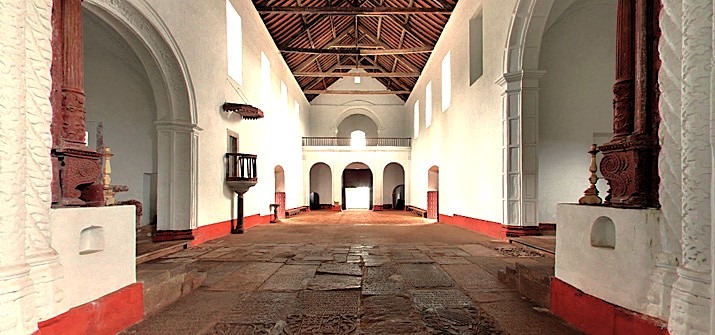
Church of Our Lady of the Rosary Old Goa: Sacred Spaces
Built as a simple yet meaningful space of worship. Unlike some of the more elaborate churches in Old Goa, its design reflects simplistic elegance while incorporating historical influences. Inside the church lies the tomb of Dona Catarina, the wife of Garcia de Sá, a Portuguese governor of Goa from the mid-16th century. An inscription on her gravestone invites those who read it to “pray for her soul.” The edifice holds sacred artifacts, including its grand altar dedicated to Our Lady of the Rosary, which is adorned with subtle Gothic details.
Ancient Mosaics: Impeccable Craftsmanship
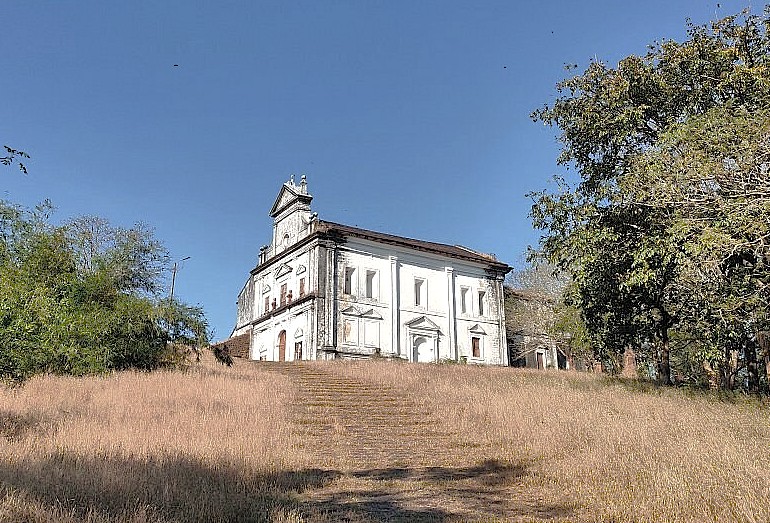
The craftsmanship of the church reflects the merging of cultural influences and local materials. Built with red laterite stone, the church retains a fortress-like aesthetic, with cylindrical buttresses and towers lending stability to its structure. Ornamental Manueline elements, including decorative cornices, ropes carved around the edifice, and Gothic-inspired arches, demonstrate the artistic influences of Renaissance Portugal. The ceilings of the church and its chapels incorporate rib-vaulting, creating a star-like pattern symbolic of the heavens.
The Pulse of the Local Community
Church of Our Lady of the Rosary Old Goa. The Church continues to inspire devotion among Goa’s local communities. The people surrounding Old Goa cherish their role as custodians of its legacy. Through preservation and storytelling, they ensure the church retains its cultural and spiritual importance. The tranquil surroundings, coupled with the reverent attitude of caretakers, evoke an air of timelessness that is unique to spaces of historical worship in Goa.
Capturing the Magic: A Photographic Haven

Around the Chapel we walk shaded paths and take photos of its white walls and stone steps. The area is calm, with locals sometimes sitting in clusters, talking quietly or watching the street. Market stalls set up nearby, with handcrafts, snacks, and bright fabrics on display as people pass by. Children play games in open spaces, running around small shrines or tracing patterns in the dust. Occasionally, bells ring and clouds drift across the chapel’s roof. Our presence adds a gentle bustle, the sharing of space and curiosity shaping a simple exchange between us and those living here.
A Culinary Journey: Savor the Flavour
Church of Our Lady of the Rosary Old Goa. The culinary flavors of Old Goa reflect the fusion of Portuguese and Indian influences. Traditional dishes like xacuti - a spiced coconut curry with chicken or mutton - are rooted in Portuguese heritage while showcasing the abundance of spices from nearby regions. Seafood-based delicacies, such as prawns in coconut sauce or fish recheado, are also must-try dishes.
The Connection with the Gods

In Old Goa, legends about Mother Mary’s interventions often appear in stories told near church steps or during local gatherings. Some mention sailors surviving storms after lighting candles, while others share moments of recovery from illness made after prayers. Simple processions pass by the church, led by people carrying flowers and small images of Mary. Paintings inside chapels reveal these legends in quiet scenes, with a motherly figure standing near the sea or protecting families. Local guides point to plaques and carvings describing these stories as we move along hallways and aisles.
Ancient Technologies: Sound, Sacred Geometry & Astrological Influences
The rib-vaulted ceilings and curved naves of the church reveal an understanding of sound and symmetry in sacred settings. These designs amplify hymns and prayers, creating an immersive effect during religious services. The construction materials selected for the church, including laterite and lime plaster, ensured strength and natural cooling suitable for Goa’s tropical climate. The alignment of the central altar and interior nave promotes balance, evoking spiritual harmony during ceremonies. This simplistic manifestation of sacred geometry served to connect worshippers to their faith through thoughtful use of space and light.
Festivals of Devotion: Honouring the Sacred and the Divine
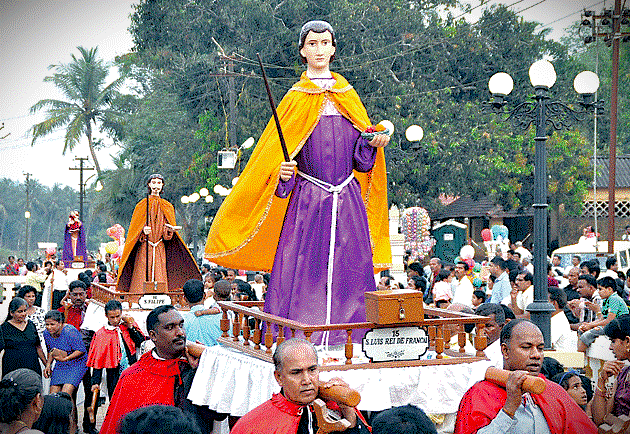
An integral part of local events in Old Goa involves feast days dedicated to Our Lady. These celebrations include processions with songs, prayers, and colorful floral displays. The mood remains peaceful, shaped by long-standing routines and soft sounds of hymns. As we walk among people carrying offerings, the air fills with familiar scents from rich food served during these times. The church stands as a focal point, tying together past traditions with current gatherings. Floral decorations add color against quiet stone walls and create a simple harmony in the area.
Resilience and Renewal: Overcoming Adversity’s Challenges
Church of Our Lady of the Rosary Old Goa. Despite its historical prominence, the Church faced moments of decline, particularly as Old Goa began to lose its status to Panaji in 1843. Its remote location allowed it to remain largely untouched by modernization, which might have otherwise altered its original form. However, neglect led to parts of the structure weakening over time, including the collapse of portions of the roof in 1897. Renovation efforts introduced selective repairs during the late 19th century, ensuring that the church retained its character. As part of Unesco’s recognition of Old Goa in 1986, the church stands protected today as a cherished artifact echoing centuries of resilience.
Serendipitous Meetings: Beyond the Main Path
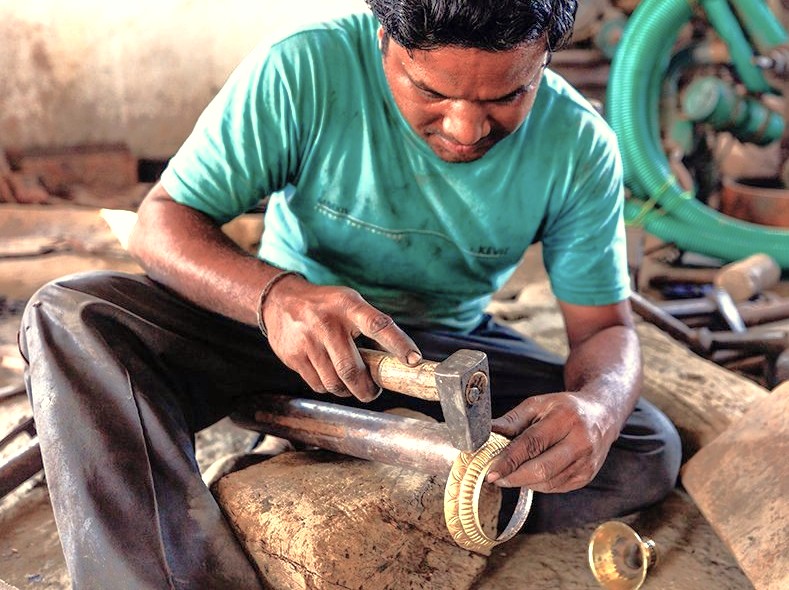
As we move beyond the church, we meet local artisans displaying handmade crafts along village lanes. Woven baskets, clay pots, and bright textiles hang from simple stalls, each piece reflecting skills used for generations. Craftspeople talk about techniques while showing how patterns are made with colored threads or paint. We see families working together, sorting fabrics or shaping clay by hand. Laughter and conversation fill the air as we look through items on display. Each corner has a small table or cloth set out, holding wooden carvings, jewelry, and embroidered cloth.
Urban Legends: Strange Sightings, Myths, and Mysteries
Folklore around the Church includes stories about divine visions on Monte Santo. Locals mention soft lights sometimes seen near the altar late at night, thought to signal the presence of blessings. The high windows of the church let in long beams of light during the day, giving a calm glow inside the stone hall. Outside, we walk along quiet paths where neighbors trade stories about sightings or unusual moments. Market stalls stand nearby, offering handmade crafts, textiles, and snacks while children play under shaded trees. The area mixes everyday life with these legends, bringing an easy blend of routine, curiosity, and age-old tales.
There's No Time Like Now - Discover the Magic
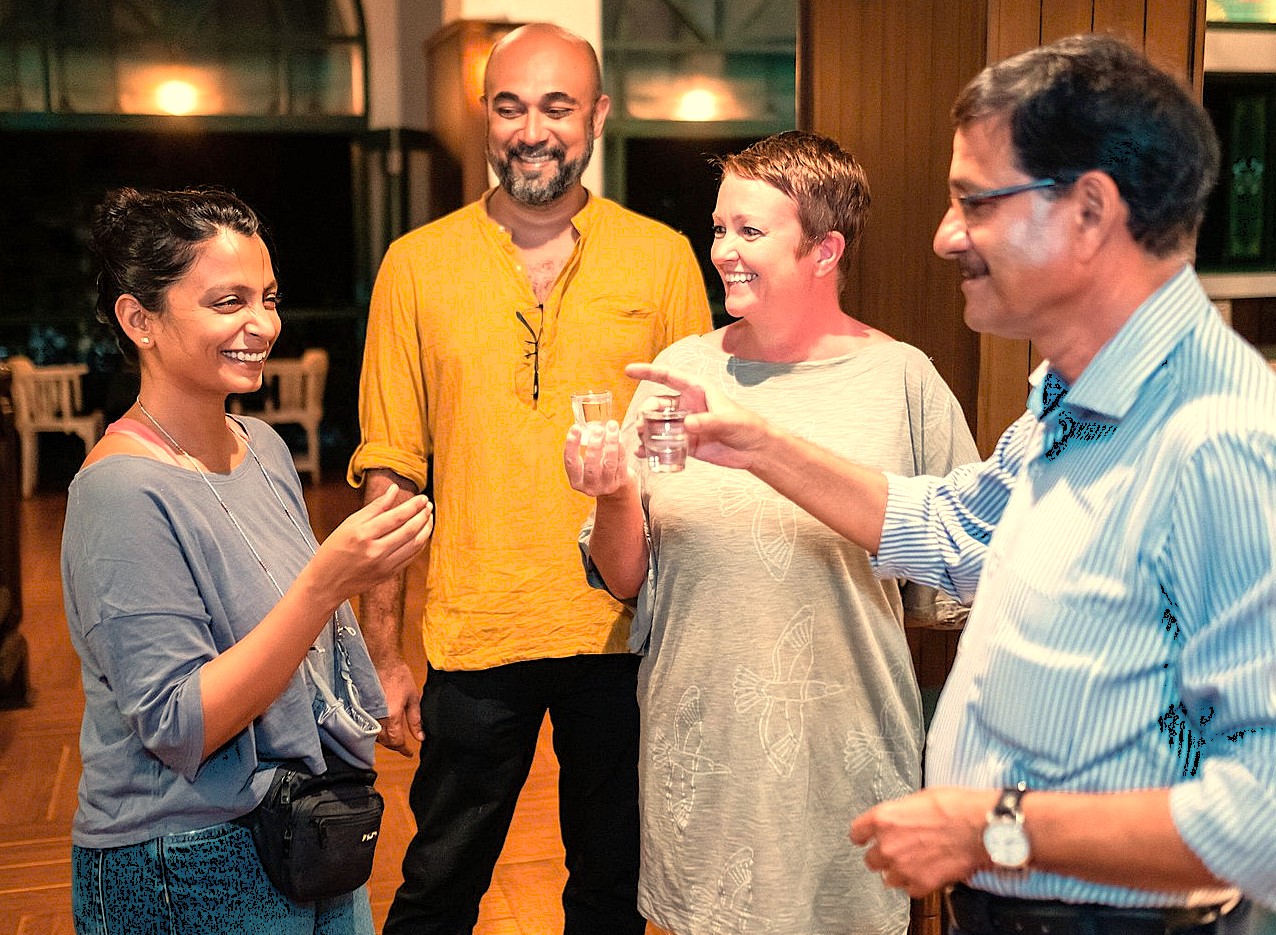
The slow rhythm of local life around the Church of Our Lady of the Rosary. Simple stalls line the way, filled with baskets, pottery, and bright textiles arranged on wooden tables. Craftspeople show how they work, twisting threads, carving wood, and shaping clay as we watch. Some talk about patterns passed down in families, while others neatly stack finished cloth or beads. The air carries voices of people chatting and the distant sound of church bells. We pause to take in wide views, with rooftops, trees, and chapels in sight. The mountain setting blends history, daily routines, and skills that keep traditions steady.
Symphony of Generosity: Offerings from Wanderers to Residents
Small shops and eateries line streets where locals meet travelers each day. Owners share stories about handwoven textiles and crafts displayed on colorful tables, while we learn about traditional techniques and regional styles. Our purchases help support families who maintain age-old skills through selling baskets, pottery, and beaded jewelry. Nearby food stalls offer spiced dishes made fresh each morning, allowing us to taste local flavors while providing steady income to cooks. This exchange keeps cultural practices alive as craftspeople continue making items visitors value, and we take home items with real meaning. The rhythm of giving and receiving flows naturally, creating a circle that strengthens both sides.